|
BULB LOG 32 ---- 8th August 08
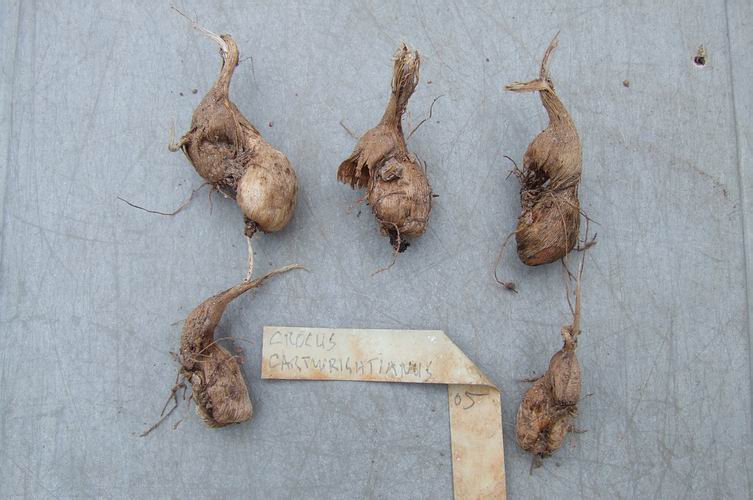
Crocus cartwrightianus corms
One of my constant sayings is that our plants give us signs of what they want. In the case of these Crocus cartwrightianus corms it is easy to see from the new corm forming well below the old tunic and not inside it that they are trying to take themselves deeper into the pot.

Crocus corm escaping
There was another clue which I noticed as soon as I lifted the pot from the sand plunge - one corm was escaping through the drainage hole. Crocus cartwrightianus is related to C. sativus, the saffron crocus, and I have discussed its cultivation before but basically it likes to be planted deeply in a rich warm soil before it will flower freely. I experimented by planting a few of my C. sativus deeply in the new sand plunge resulting in the biggest corms I have ever managed to produce of that species, I am waiting to see if they will flower this autumn. Back to Crocus cartwrightianus; it obviously also prefers to be planted as deeply as the pot will allow so I have planted these back almost at the bottom of the pot with barely 1 centimetre of compost below them. I do manage to get a few flowers on my Crocus cartwrightianus each year but I want to get all my mature corms up to flowering on a regular basis because it is such a beautiful species.

Crocus corms in pot
I find that a planting depth of around half way down a pot suits most Crocus species, like this one, which has increased nicely to fill its pot. Last year due to my poor watering these corms had become too small to flower but having made the correction this past growing season I now have a pot full of good sized corms most of which are flowering sized.
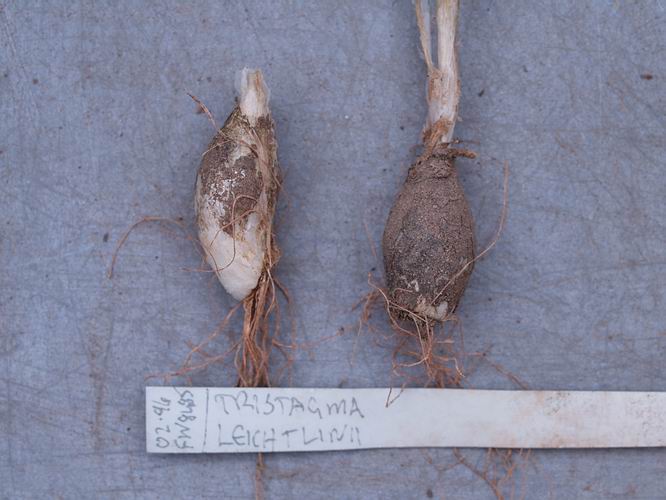
Tristagma leichtlinii bulbs
I do tend to suggest to people that are having problems growing or flowering bulbs in pots that they are probably not planting them deep enough. As a general rule that, along with not watering them enough in the winter when they are growing, is the most common cause of not getting bulbs up to flowering size. Here we can see another case of the bulbs giving us a clue as to how deep they want to be planted. The bulb on the left has a pointed base and also you can see some large fatter contractile roots - these are designed to pull the bulb deeper into the compost rather than to feed it and along with the pointed bottom are a sure sign that this bulb wants to be planted deeper. The bulb on the right has a flat bottom and no contractile roots indicating it was happy with its planting depth. Both these bulbs were in the same pot and I fell into the same trap as many others - planting the smaller of the two bulbs a bit shallower in the pot in case it could not reach the surface. Well this is just nonsense as even t
he smallest bulb is capable of sending up a leaf through a much greater depth than it will ever have to in a pot. Needless to say these bulbs are also repotted at almost the bottom of the deeper type of pots that I use.
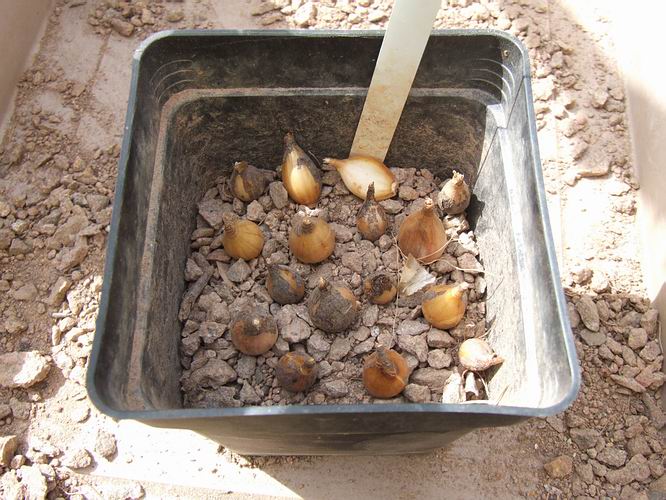
Narcissus watieri bulbs in pot
When it comes to Narcissus bulbs and planting depth I divide them into groups and I find that Narcissus rupicola along with its allies and N romieuxii forms prefer to be planted above the half way mark of the pot while most of the others such as the jonquils like to be well below the half way mark if not at the bottom.
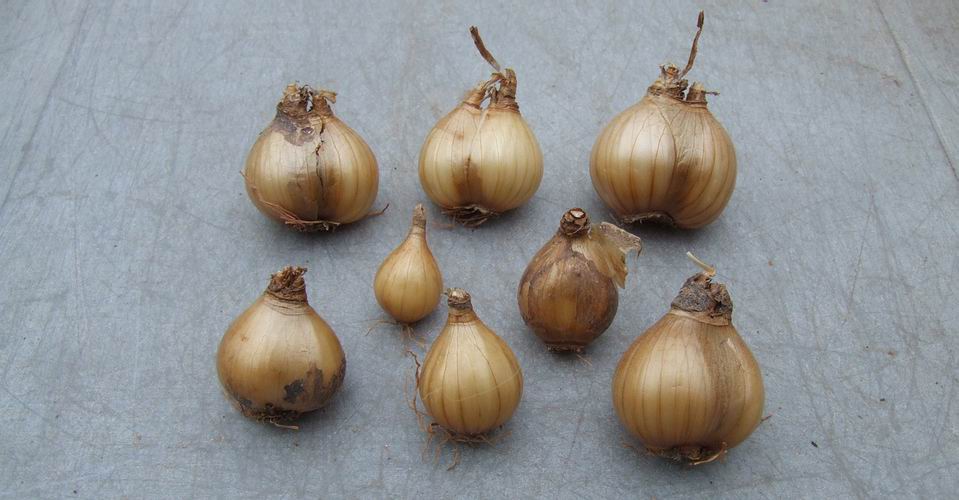
Narcissus triandrus loiseleurii
I used to place my Narcissus triandrus bulbs below the half way mark thinking they needed depth to grow best but I had problems with them being short lived often rotting off after a few years. A year ago when I switched to all plastic pots (and through caution was guilty of not watering my bulbs enough) I discovered that while many Narcissus bulbs split into many small non flowering sized bulbs all my pots of Narcissus triandrus were bigger than I have ever grown them. I took from this that I was keeping the bulbs too wet and by planting them above the half way point of the pot they would be kept in the drier section of the compost. This has proved true as these are good fat bulbs of Narcissus triandrus loiseleurii showing every sign of being much happier planted at a shallower depth. It is easier to tell when a bulb wants to be planted deeper because of the shape of the bulbs, contractile roots, etc but the signs that you are planting a bulb too deep are much more subtle and difficult to work out.
The local conditions such as your weather, compost mix, watering regime, etc can all affect what depth a bulb is happy at so take the messages from your bulbs by observing them carefully when you are repotting and respond to what they are telling you.
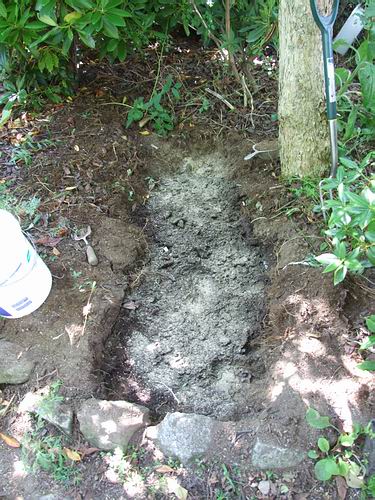
Planting hole
Some weeks ago I showed pictures of me clearing out a bulb bed where Dicentra had become too dominant. This week I started to dig out sections to around 30cms deep, that is about as far as I can go without having to cut tree roots, I placed all the soil into a pile carefully removing all the bulbs that I found. At the bottom of the trench I placed a layer of leafmould with a good dusting of bone meal which I mixed in before planting the bulbs.
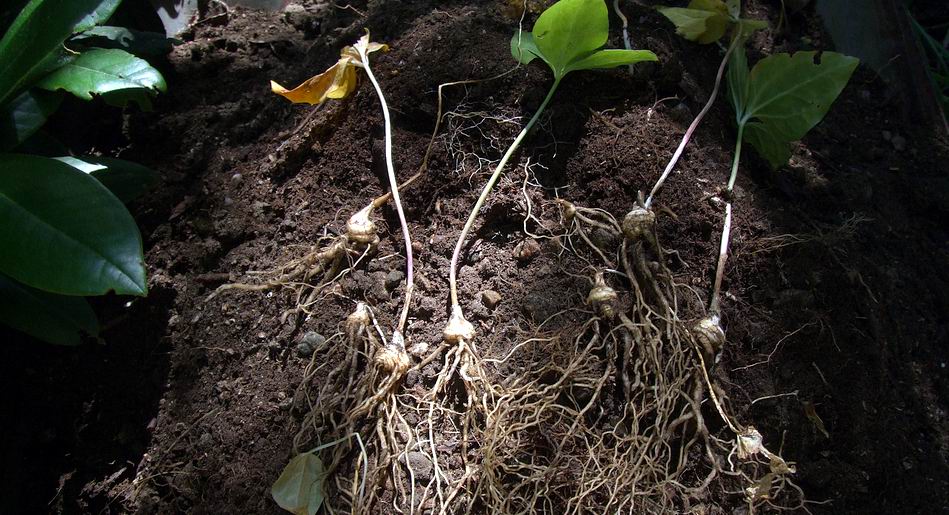
Trillium chloropetalum
I took this opportunity to lift a group of Trillium chloropetalum seedlings that were growing in a congested clump just where the seed pod had fallen on the gravel area at the edge of the bed- I find this is the ideal time to lift and split trilliums. I spaced the trilliums around the pit.
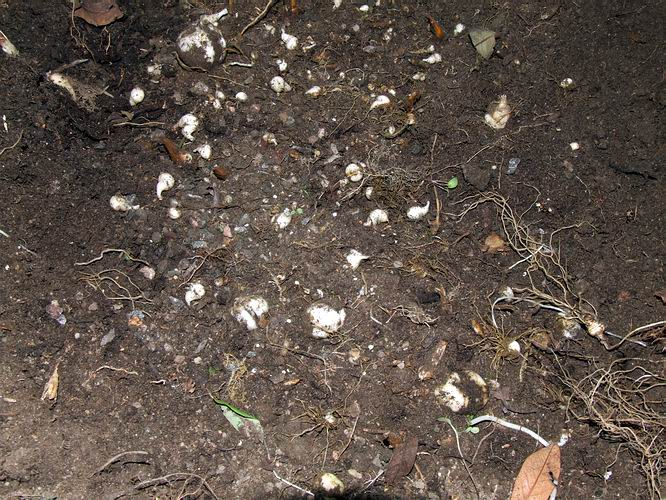
Bulbs placed
Then I scattered the other bulbs - a mixture of Fritillaria, Erythronium, Corydalis, etc, around before filling up the trench.
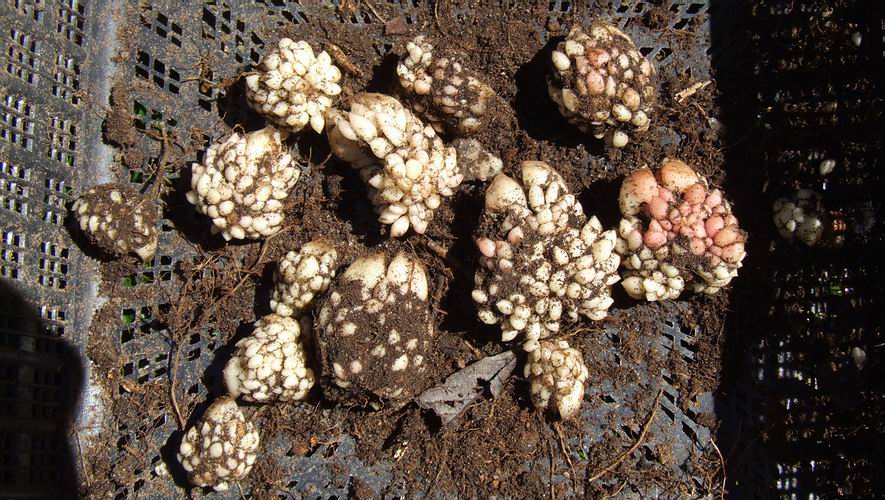
Dicentra cuccularia bulbs
The last bulbs I planted were some Dicentra cuccularia bulbs. I have discovered that these bulbs need to be very near the surface to flower well so I just popped them in individually a few centimetres down. I will continue to take out another trench and repeat this procedure until the bed is done. The reason I cannot do it all at once is I do not have the space to pile all the soil without moving it a long way and I do not want that extra work.
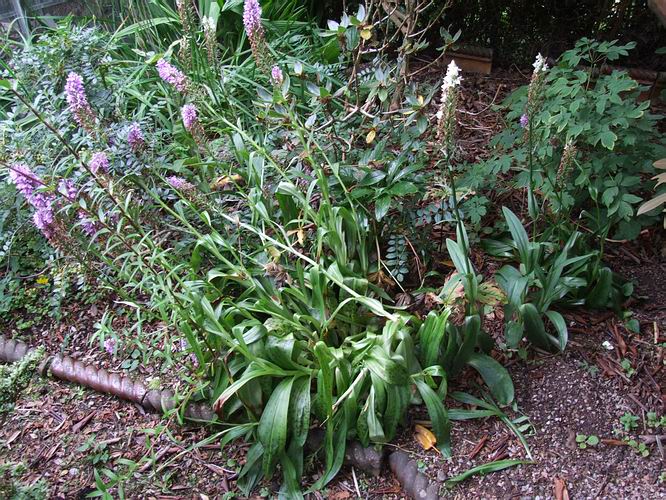
Dactylorhiza clumps
Every where I look in the garden just now I see jobs that need doing - like splitting this clump of Dactylorhiza which I should have done two years ago. The way the stems are falling over is the plant giving me desperate signs that it is too congested to grow properly.
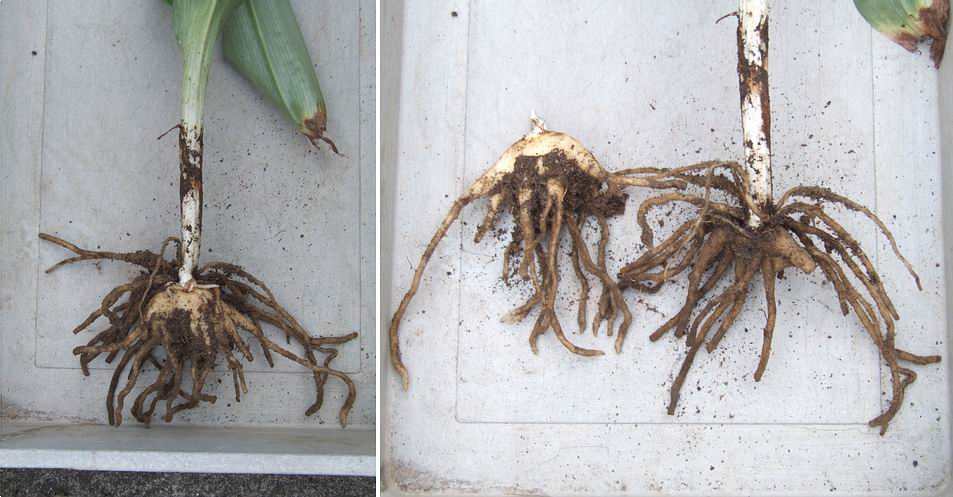
Dactylorhiza 'Eskimo Nell'
If you look to the right of the picture you will see some plants of the white Dactylorhiza 'Eskimo Nell' - one was in danger of getting harmed so I lifted it and split the new tuber off the plant. Eskimo Nell' is not as vigorous as other forms and often just produces one new tuber - by removing it now the plant will go on and produce another before it dies down.
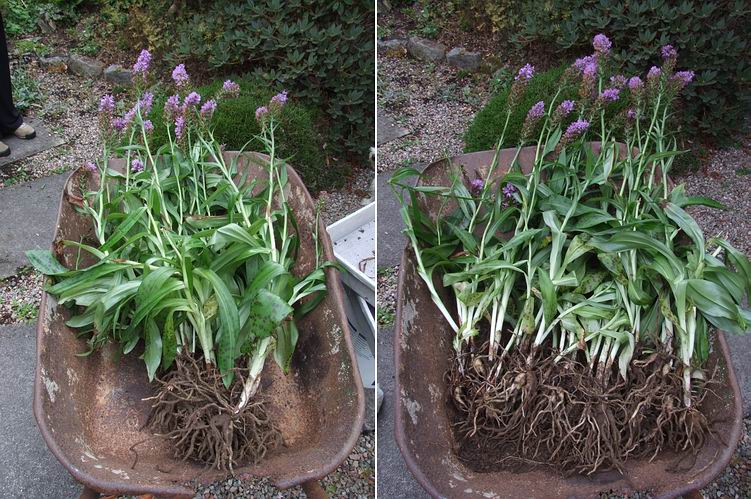
Dactylorhiza 'Craigton Spire'
Here is the main clump I was after: it is a self sown seedling that we moved out of one of our pathways a number of years ago and it has proved to be very healthy and robust.
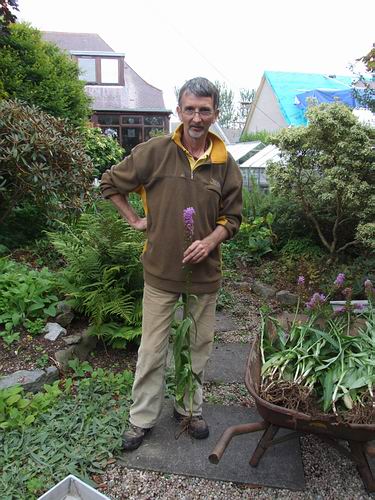
'Craigton Spire'
You can see why we have given it the name 'Craigton Spire' and if you think this is big you should see how magnificent it is when it is not in such a congested clump. Again this is my favoured time to lift and split Dactylorhiza because it gives me the opportunity to greatly increase my stock.
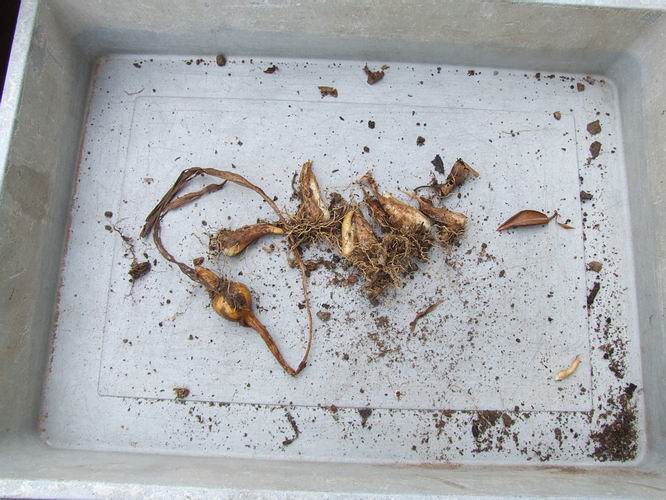
Other bulbs
As with any bulbs we lift in out garden they are never alone so I first have to remove the Erythroniums and Colchicums from the clump of orchids.
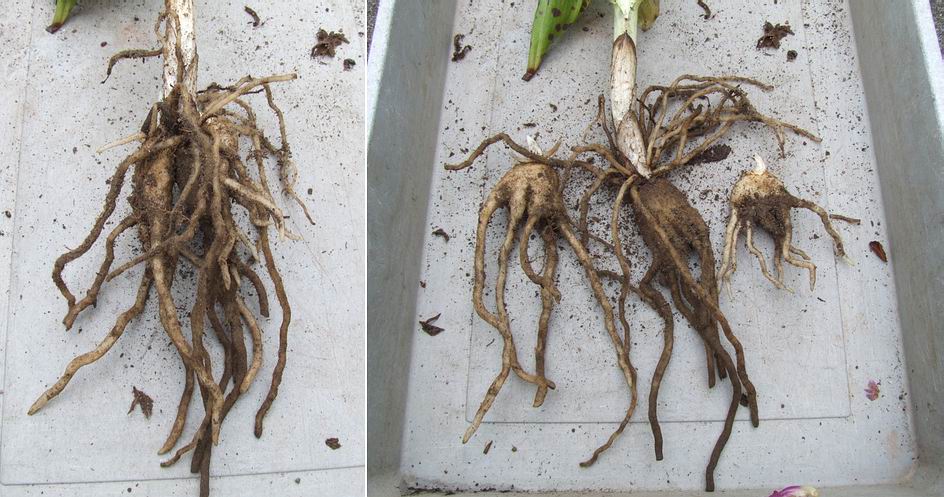
Dactylorhiza tubers
Then I carefully go through and remove all the new tubers from the stems - in this case most stems have two new tubers. I plant the new tubers some back into the same area and others into other beds and then I also plant the flowering stem complete with old tuber.
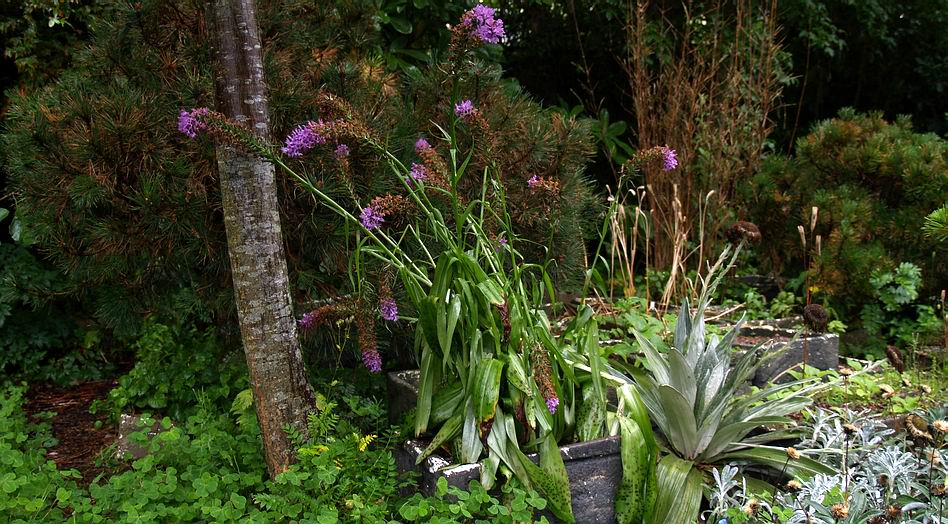
Dactylorhiza stems in box.
In this case I have planted the stems into a box so I can lift them in the winter or early spring by which time another set of tubers will have formed so greatly increasing my stock of this magnificent plant. If you let Dactylorhiza get too congested they gradually get smaller and smaller as the competition for water and nutrient becomes tougher - they perform much better if split every two or three years - read the signs.
^ back to the top ^
|

